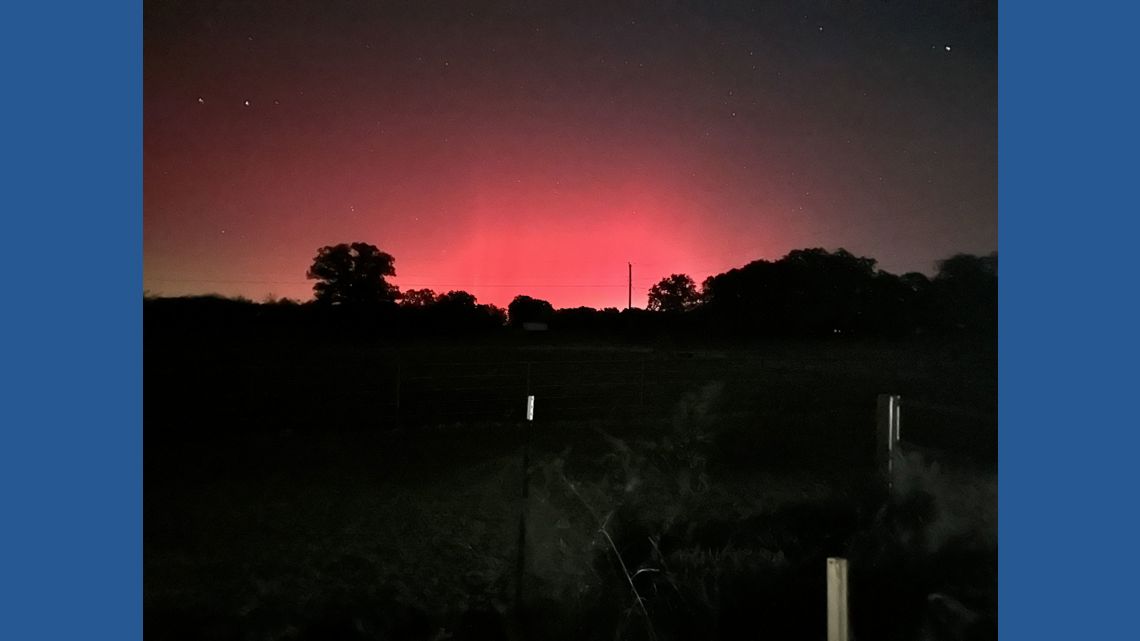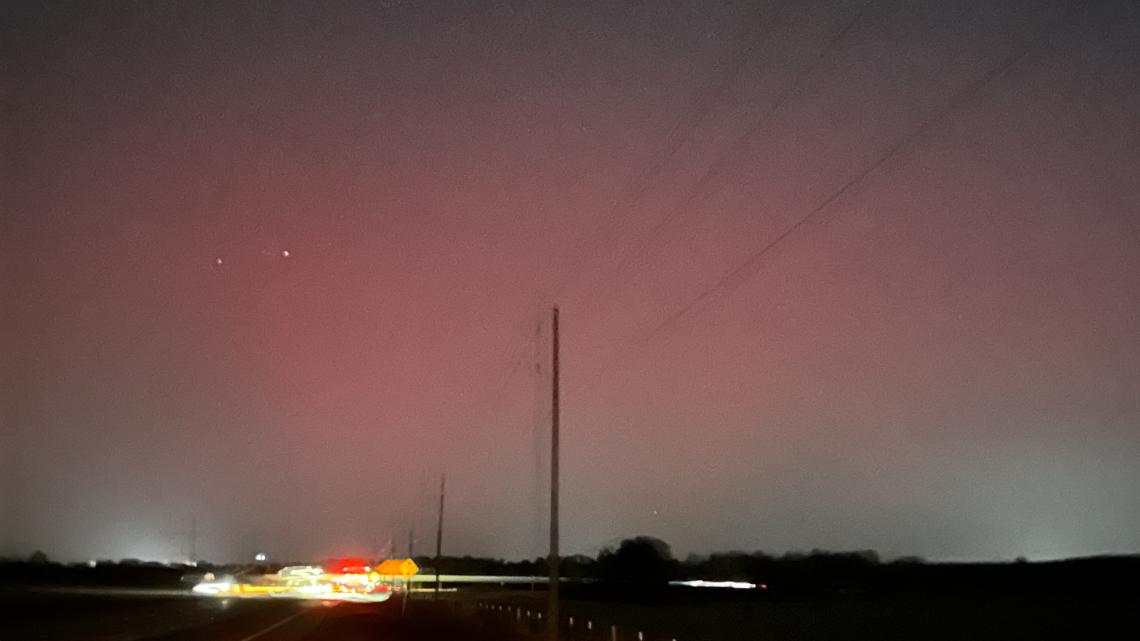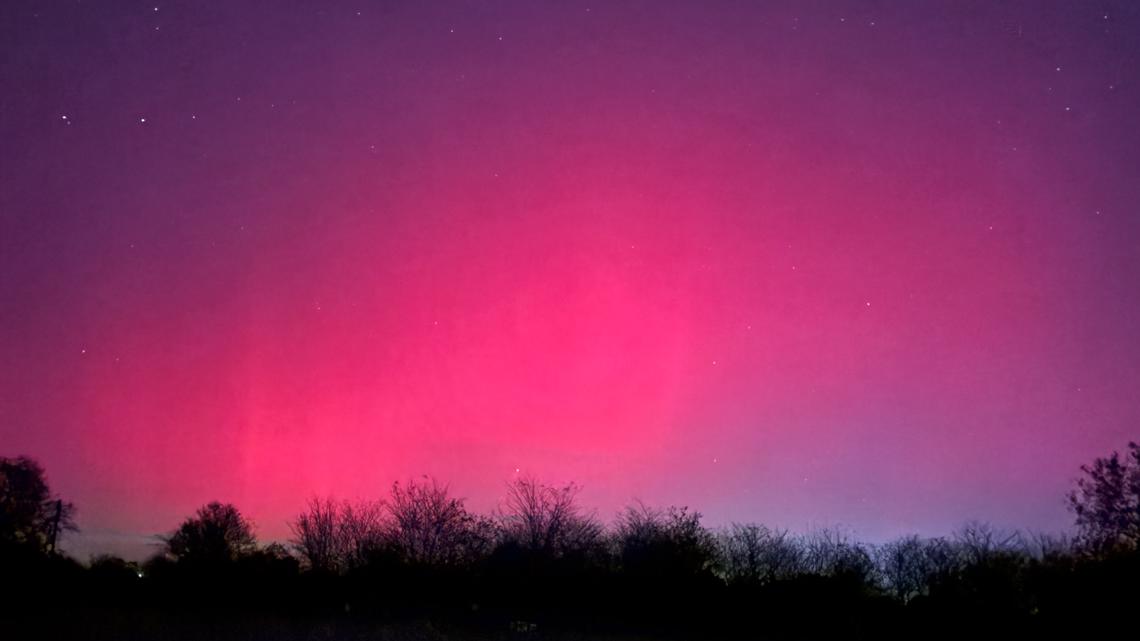Houstonians might not be able to see the display thanks to light pollution, but some rural areas had a treat.
HOUSTON — The northern lights are leaving colorful displays across several U.S. states on Tuesday night. The lights were even visible in Southeast Texas.
Forecasters issued a severe G4 geomagnetic storm watch for Tuesday, Nov. 11 and Wednesday, Nov. 12.
The light pollution made it difficult to see from Houston proper, but some people in Montgomery County northward were treated to a sight.
Sightings were reported across North Texas and even down to Brazos and Grimes counties.


RELATED: PHOTOS: Northern lights put on dazzling display in several US states
What is a G4 geomagnetic storm?
The alert comes after a coronal mass ejection, an eruption of solar material and magnetic fields from the Sun’s surface, was set to hit Earth late Tuesday into Wednesday. Coronal mass ejections, known as CMEs, usually generate spectacular displays of aurora borealis in northern U.S. states.


What causes the northern lights?
In layman’s terms, the sun is constantly shooting out charged particles. But sometimes, it emits a particularly violent stream of energy known as solar wind, during solar flares or “coronal mass ejections.”
When these energetic solar winds hit the Earth’s atmosphere, they collide with the gases in the upper atmosphere and charge them. As that energy dissipates, it lets out light that we can see.
The different gases produce different colors, which is why an aurora borealis can shift from green and blue to red and purple.


How to see auroras
Northern lights forecasts can be found on NOAA’s Space Weather Prediction Center website or an aurora forecasting app.
Consider aurora-watching in a quiet, dark area away from city lights. NASA’s Kelly Korreck recommended skygazing from a local or national park. And check the weather forecast because clouds can cover up the spectacle entirely.
Taking a picture with a smartphone camera may also reveal hints of the aurora that aren’t visible to the naked eye.


Where are the northern lights visible on Tuesday?
Most states bordering Canada have a chance to view the celestial phenomenon. The predicted “view line,” or the southernmost spot where skygazers might still be able to view the northern lights, also includes states as far down as Illinois and Iowa.
As you can see, Texans were not expected to be able to see it every well.
- Alaska
- Oregon (partially)
- Washington
- Idaho (partially)
- Montana
- Wyoming (partially)
- North Dakota
- South Dakota
- Nebraska (partially)
- Iowa (partially)
- Minnesota
- Illinois (partially)
- Michigan
- Wisconsin
- New York
- Vermont
- New Hampshire
- Massachusetts (partially)
- Maine (partially)


Leonids to light up the sky this week
If you enjoyed the northern lights, the next event to watch is the peak of the Leonid meteor shower on November 17.
According to NASA, stargazers can see up to 15 meteors per hour during this time.
Conditions are relatively favorable for 2025 as the Leonids peak near a new moon.
The Associated Press contributed to this report.